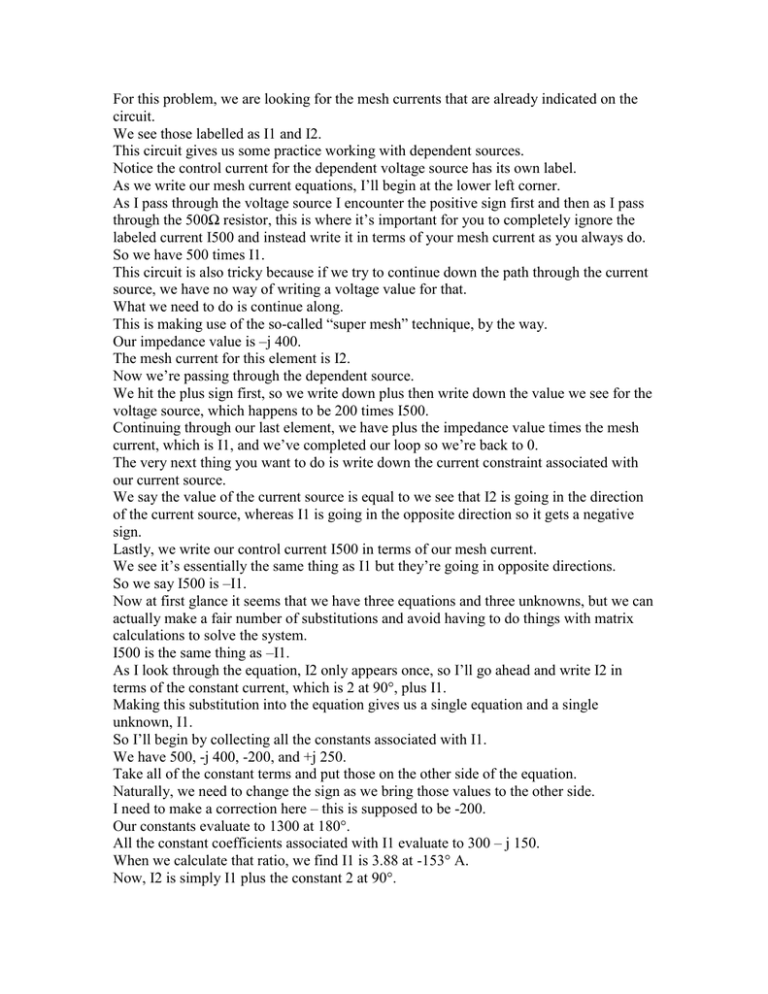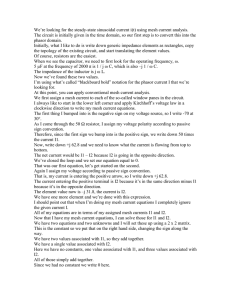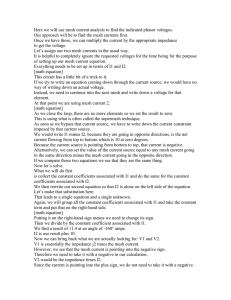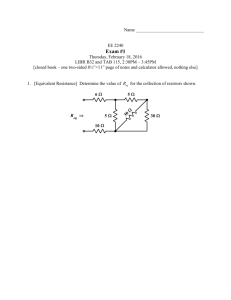For this problem, we are looking for the mesh currents... circuit. We see those labelled as I1 and I2.
advertisement

For this problem, we are looking for the mesh currents that are already indicated on the circuit. We see those labelled as I1 and I2. This circuit gives us some practice working with dependent sources. Notice the control current for the dependent voltage source has its own label. As we write our mesh current equations, I’ll begin at the lower left corner. As I pass through the voltage source I encounter the positive sign first and then as I pass through the 500Ω resistor, this is where it’s important for you to completely ignore the labeled current I500 and instead write it in terms of your mesh current as you always do. So we have 500 times I1. This circuit is also tricky because if we try to continue down the path through the current source, we have no way of writing a voltage value for that. What we need to do is continue along. This is making use of the so-called “super mesh” technique, by the way. Our impedance value is –j 400. The mesh current for this element is I2. Now we’re passing through the dependent source. We hit the plus sign first, so we write down plus then write down the value we see for the voltage source, which happens to be 200 times I500. Continuing through our last element, we have plus the impedance value times the mesh current, which is I1, and we’ve completed our loop so we’re back to 0. The very next thing you want to do is write down the current constraint associated with our current source. We say the value of the current source is equal to we see that I2 is going in the direction of the current source, whereas I1 is going in the opposite direction so it gets a negative sign. Lastly, we write our control current I500 in terms of our mesh current. We see it’s essentially the same thing as I1 but they’re going in opposite directions. So we say I500 is –I1. Now at first glance it seems that we have three equations and three unknowns, but we can actually make a fair number of substitutions and avoid having to do things with matrix calculations to solve the system. I500 is the same thing as –I1. As I look through the equation, I2 only appears once, so I’ll go ahead and write I2 in terms of the constant current, which is 2 at 90°, plus I1. Making this substitution into the equation gives us a single equation and a single unknown, I1. So I’ll begin by collecting all the constants associated with I1. We have 500, -j 400, -200, and +j 250. Take all of the constant terms and put those on the other side of the equation. Naturally, we need to change the sign as we bring those values to the other side. I need to make a correction here – this is supposed to be -200. Our constants evaluate to 1300 at 180°. All the constant coefficients associated with I1 evaluate to 300 – j 150. When we calculate that ratio, we find I1 is 3.88 at -153° A. Now, I2 is simply I1 plus the constant 2 at 90°. We’ve found both values and we’re done with this problem.









